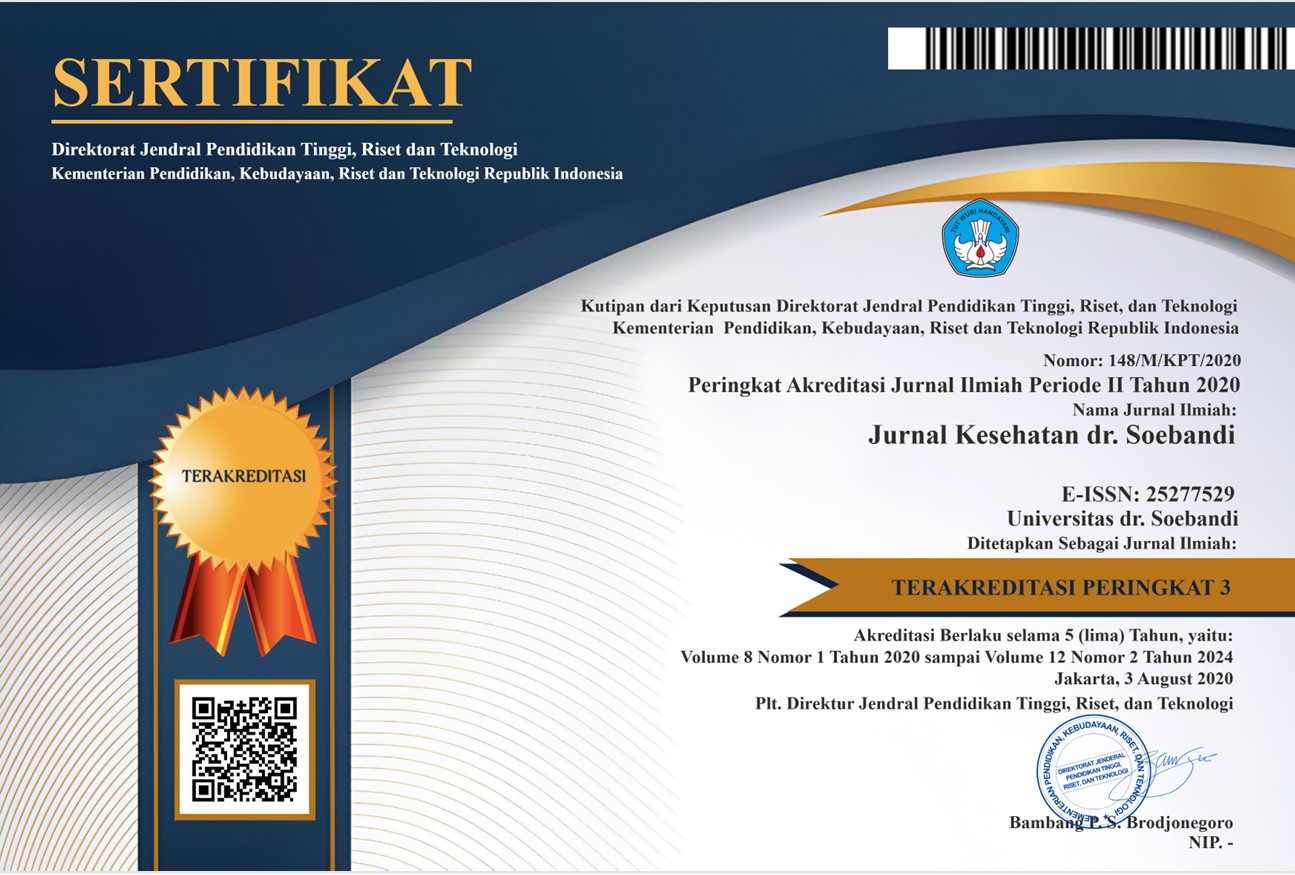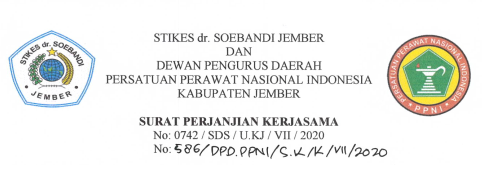Effectiveness of Slow Deep Breathing Therapy on the Severity of Asthma in Rose Room of RSUD. Dr. R. Koesma Tuban
DOI:
https://doi.org/10.36858/jkds.v7i2.144Keywords:
Asma bronkial, Slow Deep Breathing, Tingkat Keparahan AsmaAbstract
Bronchial asthma is a disorder in the form of chronic respiratory inflammation that causes bronchial hyperactivity to various stimuli. Prevalence data based on medical records at RSUD dr. R. Koesma Tuban the number of asthma patients throughout 2018/2019 reached 131 asthma patients. Efforts made in the severity of asthma in addition to controlling the triggering factor is by administering slow deep breathing as an additional therapy for asthma by using a peak flow meter. The purpose of this study is to reduce the severity of asthma in patients with persistent severe bronchial asthma in the Rose Room of RSUD Dr. R Koesma Tuban. This type of research is Quasy Experimental with a pretest-posttest with control group design. Samples were taken using systematic random sampling with a total of 28 respondents including 14 respondents in the experimental group and 14 respondents in the control group. Data collection is done by using observation sheets. Analysis of research data using the Mann Whitney Test. Mann Whitney Test Results obtained Asymp results. Sig. (2-tailed) = 0.002 where 0.002 <0.05 then H1 is accepted H0 is rejected so it can be concluded that there is an effect of slow deep breathing therapy on the severity of asthma in asthma patients. It can be concluded that slow deep breathing therapy has an influence in decreasing the severity of asthma in asthma patients. Thus slow deep breathing therapy can be used as an effective adjunct therapy to reduce the severity of asthma in addition to pharmacological therapy.Downloads
Published
2019-11-02
How to Cite
FERIANTO, K. (2019). Effectiveness of Slow Deep Breathing Therapy on the Severity of Asthma in Rose Room of RSUD. Dr. R. Koesma Tuban. Jurnal Kesehatan Dr. Soebandi, 7(2), 112–119. https://doi.org/10.36858/jkds.v7i2.144
Issue
Section
Artikel







